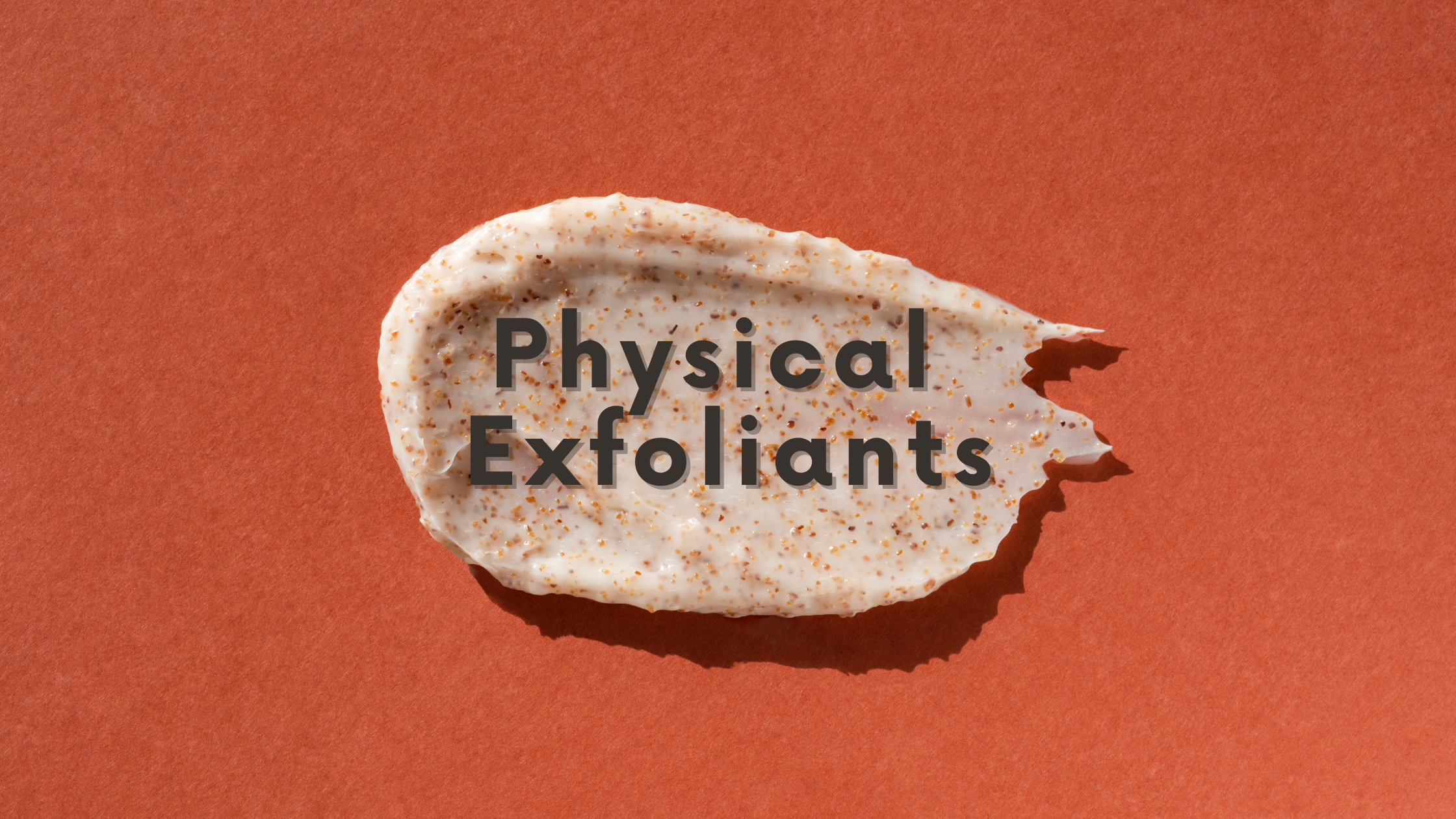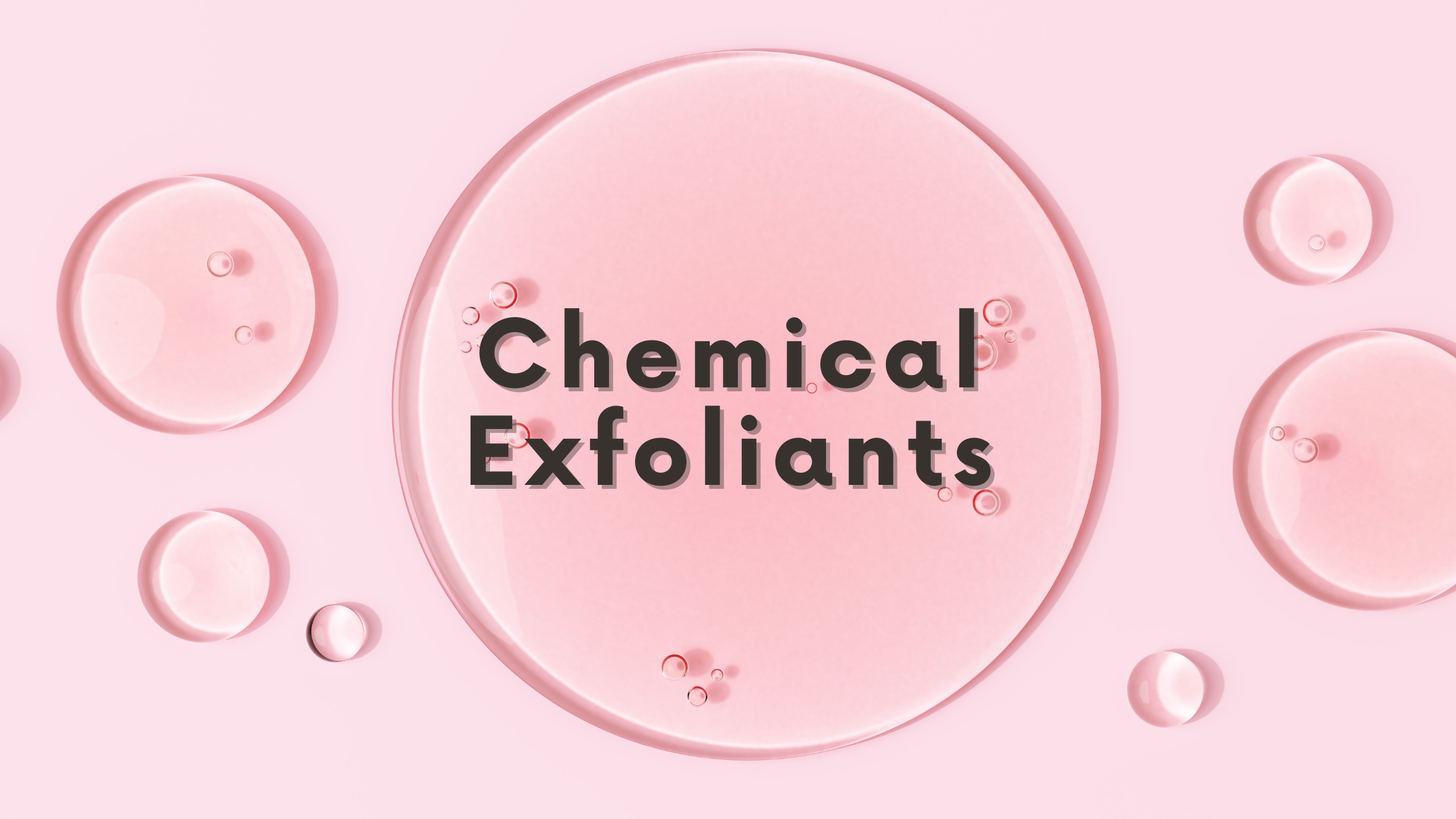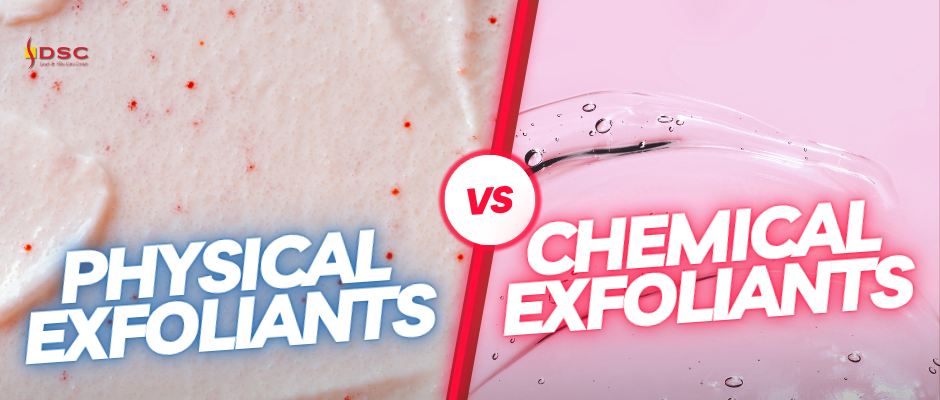Which is better: chemical vs physical exfoliants? If you’re not familiar with the different types of exfoliants, there are pros and cons to using each type. You might find that one works better for your lifestyle and daily habits, or that both work for different parts of the body. Exfoliation has a lot of benefits when it comes to caring for your skin, so keep reading to find which ones best suit you!
Benefits of Using Exfoliants
Exfoliation refers to the act of removing dead skin cells from the surface of the skin. While dead skin cells play an important role in protection and maintaining homeostasis, too much of them can lead to the appearance of flaky or ashy skin. This can hinder topical skincare absorption and may contribute to skin looking dull and dry. Exfoliating helps to reveal new skin underneath, improves texture and appearance of fine lines, reduces roughness, brighten skin by encouraging skin turnover, and helps remove dirt and debris that can clog pores or cause acne. By removing superficial dead skin, absorption of subsequent skincare products can even be improved. Thus, exfoliation is a key component to a comprehensive skincare routine.
Read More: Skincare All Year Round
Physical Exfoliants

Physical exfoliants rely on manual scrubbing to remove dead skin cells, dirt, and debris from the surface of the skin. This can be accomplished by a skincare product (whether it be a cleanser or a separate, dedicated exfoliant product) that has particles in it that physically slough off dead skin. These particles can be comprised of various materials, e.g. sugar, bits of shell, cellulose, rice powder, or jojoba beads. Physical exfoliation can also be done with tools such as: washcloths, exfoliating gloves, or even scrubbing brushes.
With all physical exfoliants, care must be taken to prevent overly-aggressive usage. Particles that are too rough or those that have non-uniform textures can irritate the skin or even cause micro-tears, damaging the skin barrier. The skin of the face is more delicate and thin that on the body, so this is especially true for using physical exfoliants on the face. Another thing to keep in mind is the need for cleanliness of exfoliation tools like scrub clothes and brushes. If these items are often left wet or not cleaned frequently, bacteria or mold can build up.
Try to pick physical exfoliant products that have softer particles or particles with no rough edges to prevent excessive usage. If daily usage is too excessive, try cutting use back to fewer times a week.
Chemical Exfoliants

Chemical exfoliants are products that rely on chemical breakdown of bonds between dead skin cells to achieve an exfoliating effect without manual scrubbing. As such, there is no distinctive product texture like a physical scrub. There are two major types of chemical exfoliants: Alpha Hydroxy Acids (AHAs) and Beta Hydroxy Acids (BHAs). AHAs are commonly water soluble and some common ones include: glycolic acid, lactic acid, and mandelic acid. Fruit acids like citric acid and malic acid are also common AHAs. Because they are commonly water soluble, these work best on exfoliating the surface of the skin. BHAs like salicylic acid are more oil-soluble, which is great for exfoliation in oilier areas like the T-zone and pores. BHAs are a great option for helping to clear clogged pores, closed comedones, sebaceous filaments, and congested skin.
While the inclusion of the word “acid” may make chemical exfoliants sound quite harsh, they can actually be more gentle than physical exfoliants provided that they are used correctly. There are different strengths of chemical exfoliants available; care should be taken to slowly introduce a chemical exfoliant into a skincare routine. Because they help slough the top layer of dead skin cells, AHAs do increase sun sensitivity, which means that they should ideally be used in the evening and in conjunction with daily sun protection. Daily usage can be aggressive, so moderating use to a few times per week may be necessary depending on skin reaction. AHAs and BHAs can be used together, either in sequence or in a combination product as needed. If you feel that a physical exfoliant isn’t getting the job done without excessive scrubbing of the skin, introducing an AHA could be a great alternative.
For assistance building a great skincare routine or to shop our curated collection of skincare products in Los Angeles, give DSC a call!
DSC Laser & Skin Care Center
www.dscbeauty.com
(626)285-0800
info@dscbeauty.com
889 S. San Gabriel Blvd, San Gabriel, CA 91776
